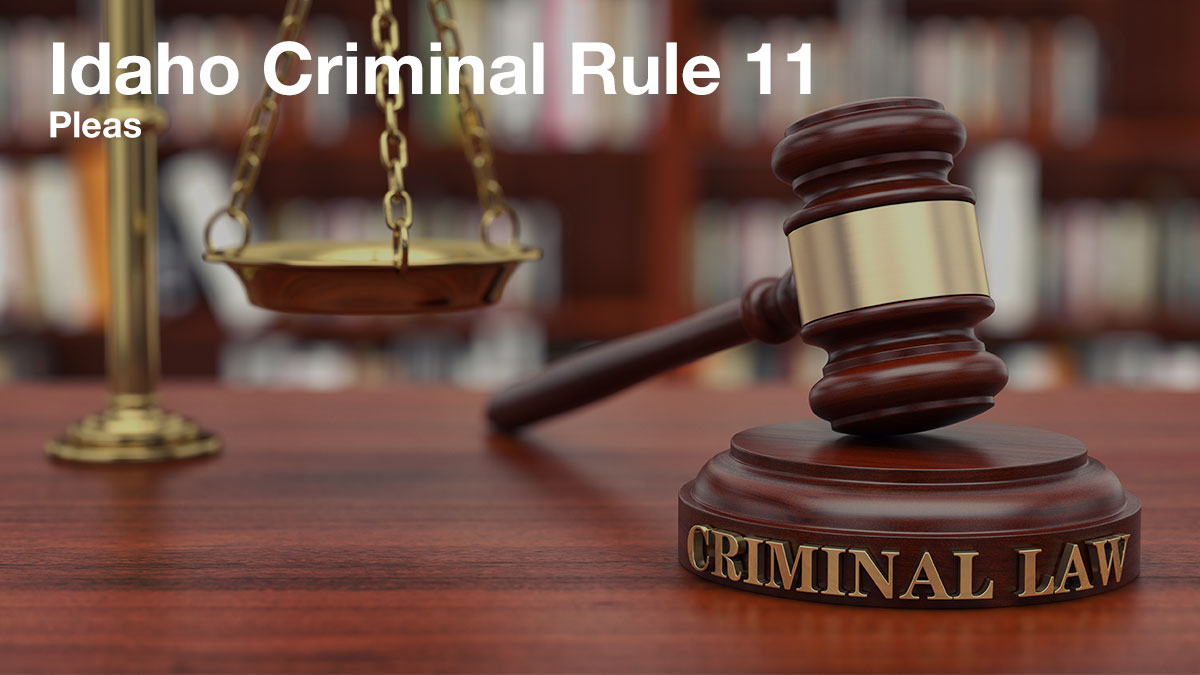If you’ve spent any time hanging around a courthouse in Idaho you will probably have heard the term “rule 11” thrown around. This raises the question for those with criminal charges, what is a rule 11?
There are really two answers to this question.
The first answer is the technical answer. Rule 11 is a rule of the Idaho Criminal Rules of Procedure. Rule 11 lays out the procedures and rules for plea agreements and guilty pleas in criminal cases.
The second answer though is the answer that criminal defendant’s are usually seeking when asking what a Rule 11 is.
In order to understand that answer, you must first understand the difference between a “binding” plea agreement and a “non-binding” plea agreement.
When a judge takes a plea, he either has discretion to hand down a different sentence than what has been agreed to by the parties or he does not. If he does have discretion then the plea agreement is a “non-binding” plea agreement, meaning the judge can deviate from the agreement that has been reached by the parties, the parties agreement only serves as a recommendation by the parties to the judge as to what the sentence should be. The judge can hand down any sentence he feels is appropriate, either a harsher sentence or a more lenient one.
On the other hand if the judge does not have discretion to deviate from the agreement of the parties, then we call this a “binding” plea agreement. In a “binding” plea agreement the judge does not have the discretion to hand down a different sentence than what has been agreed to by the parties, however the judge still maintains the discretion to reject the plea agreement. If the judge rejects the plea agreement, then the defendant has the option of withdrawing his guilty plea and going to trial.
It is this “binding” plea agreement that is customarily referred to when we refer to Rule 11 plea agreements. I do not know why we call them Rule 11 plea agreements since Rule 11 deals with all plea agreements. I imagine they were being referred to as Rule 11 binding plea agreements, and now for quick reference refer to them as Rule 11 plea agreements when distinguishing them from typical “non-binding” plea agreements.
There are pros and cons to Rule 11 binding plea agreements. The most obvious benefit is knowing what your sentence is going to be prior to pleading guilty. And if you do not get the sentence you agreed upon, then you can withdraw your guilty plea and continue on to trial.
On the other hand, parties often come to agreements that involve the prosecution promising to recommend a certain sentence, but agree to allow the defense to argue for less. This can only be done in non-binding plea agreements since this would require allowing the judge discretion to deviate from any agreed upon sentence.
Additionally, there are some judges that will not take a Rule 11 binding plea agreement under any circumstance. There is no way to force the judge to accept a Rule 11 binding plea agreement since the judge always has discretion to reject the plea agreement.
In short, when you hear someone refer to a Rule 11, they are referring to a Rule 11 “binding” plea agreement.
